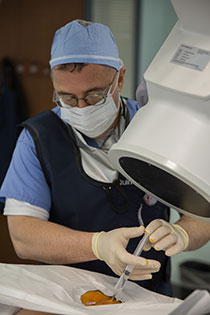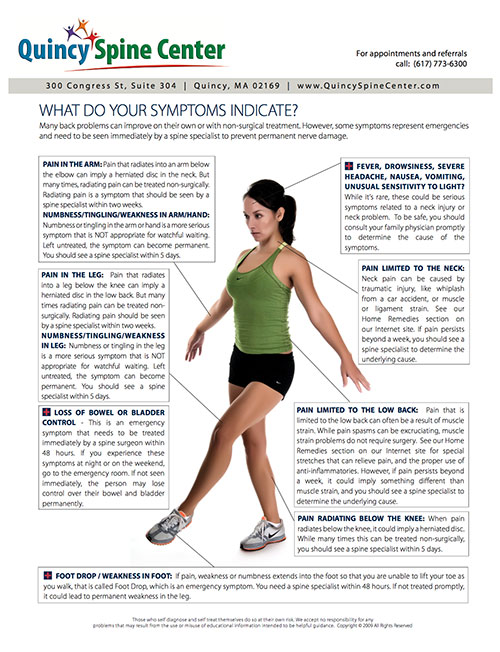Injection Therapy
 Injection therapy is intended to be a means to an end. The goal is to provide the patient with enough pain relief to bridge from inactivity to physical therapy, where back problems can be better treated with special exercises. For years, spine physicians have used cortisone injections, epidural steroid injections, trigger point injections and nerve blocks to relieve pain in the spine.
Injection therapy is intended to be a means to an end. The goal is to provide the patient with enough pain relief to bridge from inactivity to physical therapy, where back problems can be better treated with special exercises. For years, spine physicians have used cortisone injections, epidural steroid injections, trigger point injections and nerve blocks to relieve pain in the spine.
Epidural Injections
Epidural injections of cortisone may reduce the inflammation and/or swelling of the nerves in the epidural space resulting in decreased pain, tingling and numbness. The procedure involves inserting a needle of a long lasting steroid (cortisone) through the skin and deeper tissues into the epidural space. The epidural space is the area surrounding the spinal cord and the nerves coming out of it. One or more injections may be needed to relieve symptoms.
Facet Injection
The facet joints act as the hinges in our back, connecting alll the vertebral bones in our back yet still allowing us to bend and twist with ease. The illustration above shows a facet injection in progress.
Sometimes from injury or age, these joints can become irritated  or they can develop bone spurs, which makes movement painful. To relieve pain symptoms and restore range of motion, the spine physician may inject medication into the facet joint. The medicine in a way can act like WD40 on a rusty door hinge, restoring movement. Typically injections are done as a way to bridge the patient to therapy so the therapist can help the patient retain mobility after the effects of the medication wear off.
or they can develop bone spurs, which makes movement painful. To relieve pain symptoms and restore range of motion, the spine physician may inject medication into the facet joint. The medicine in a way can act like WD40 on a rusty door hinge, restoring movement. Typically injections are done as a way to bridge the patient to therapy so the therapist can help the patient retain mobility after the effects of the medication wear off.
Trigger Point Injections
Trigger points are painful tissues in and around muscles. Pressure can cause an aching or sharp pain sensation. Trigger point injections are the administration of a local anesthetic and steroid medication in the muscles where pain is occurring. The injection may relieve spasms of the muscle and may last from weeks to months.
Sacro-Iliac (SI) Joint Injections
 A long lasting steroid (cortisone) is injected into the sacro-iliac joint to help decrease inflammation and/or swelling of tissue in the joint space. As a result, patients may experience reduced pain and other symptoms caused by inflammation of the joint. The sacro-iliac joint is located in the low back area. The procedure involves inserting a needle through the skin and deeper tissues into the SI joint. More than one injection may be needed for symptom relief.
A long lasting steroid (cortisone) is injected into the sacro-iliac joint to help decrease inflammation and/or swelling of tissue in the joint space. As a result, patients may experience reduced pain and other symptoms caused by inflammation of the joint. The sacro-iliac joint is located in the low back area. The procedure involves inserting a needle through the skin and deeper tissues into the SI joint. More than one injection may be needed for symptom relief.
Rhizotomy
Rhizotomy is where the physician may use heat or cold to intentionally damage the ability of a problematic nerve to telegraph pain signals to the brain.


Understanding Symptoms
Pain is not a good indicator of when to see a doctor for a spine problem. While a back spasm can be excruciating, the good news is that ligament strain doesn’t require surgery.

Quincy Bundled Rate
Find out more about a simple 20 minute office procedure — at a $700 bundled rate — that can eliminate the need for spine surgery.

Jeffrey Jackel, MD
Board-certified Anesthesiologist
Board-certified in Pain Medicine (exp)


